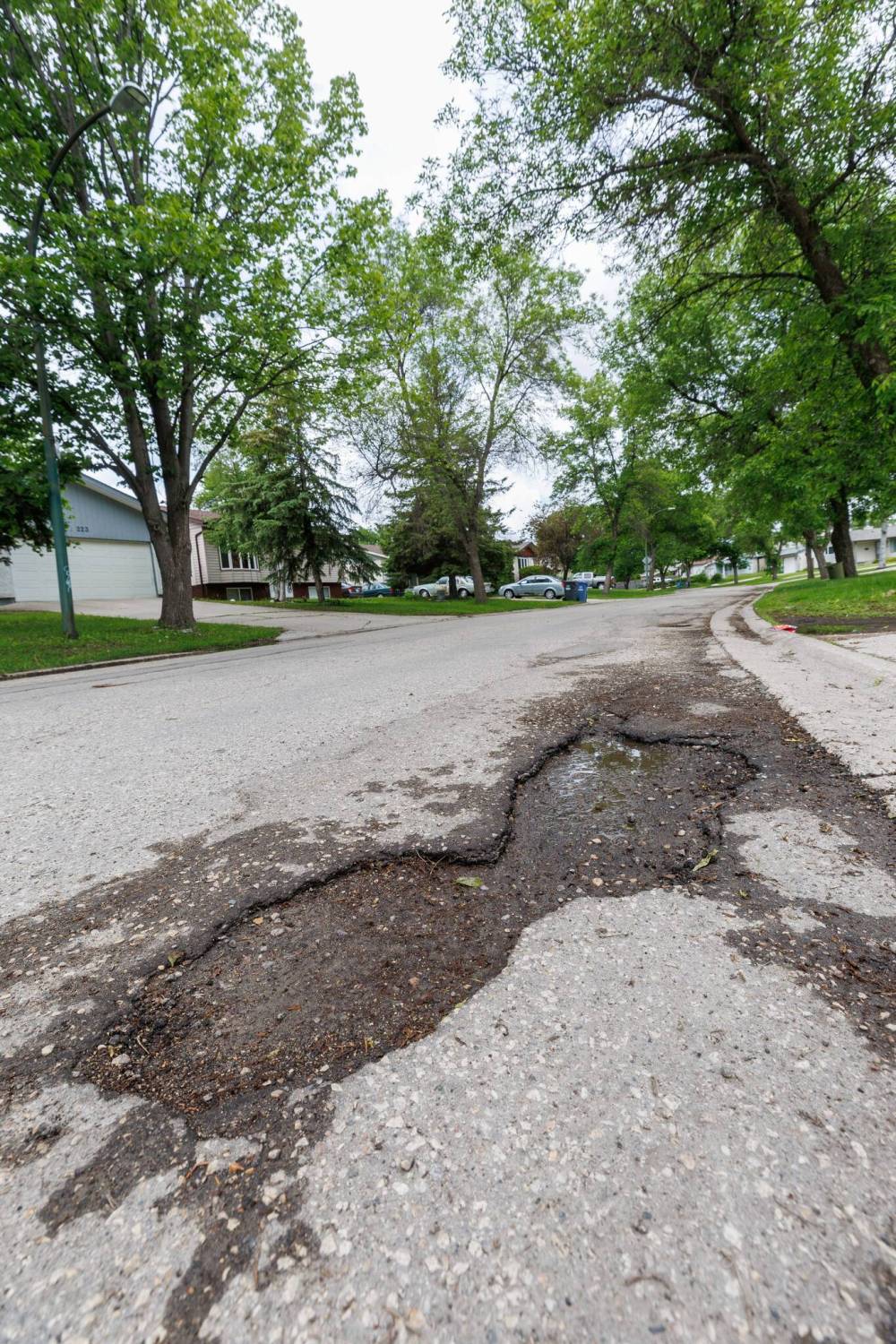Pothole pilot project not well thought out
Advertisement
Read this article for free:
or
Already have an account? Log in here »
To continue reading, please subscribe:
Monthly Digital Subscription
$0 for the first 4 weeks*
- Enjoy unlimited reading on winnipegfreepress.com
- Read the E-Edition, our digital replica newspaper
- Access News Break, our award-winning app
- Play interactive puzzles
*No charge for 4 weeks then price increases to the regular rate of $19.95 plus GST every four weeks. Offer available to new and qualified returning subscribers only. Cancel any time.
Monthly Digital Subscription
$4.99/week*
- Enjoy unlimited reading on winnipegfreepress.com
- Read the E-Edition, our digital replica newspaper
- Access News Break, our award-winning app
- Play interactive puzzles
*Billed as $19.95 plus GST every four weeks. Cancel any time.
To continue reading, please subscribe:
Add Free Press access to your Brandon Sun subscription for only an additional
$1 for the first 4 weeks*
*Your next subscription payment will increase by $1.00 and you will be charged $16.99 plus GST for four weeks. After four weeks, your payment will increase to $23.99 plus GST every four weeks.
Read unlimited articles for free today:
or
Already have an account? Log in here »
Hey there, time traveller!
This article was published 15/07/2024 (542 days ago), so information in it may no longer be current.
There can be such a thing as too much technology.
For example: earlier this week the City of Winnipeg announced its plans to use artificial intelligence (AI) to, officials say, more quickly identify potholes as they open up along the city’s streets. The pilot project is estimated to cost about $75,000, and is expected to start at the beginning of next year’s battle against our crumbling roads.
Despite its shortcomings, AI is currently as hot as a climate-change-exacerbated heat wave, being looked to by governments, farmers and across the tech sector as a tool for all problems. But it’s hard to believe we need a pilot project to explore whether or not the city needs to use AI to deal with its pothole problem.

MIKE DEAL / FREE PRESS Files
City workers have filled in more than 179,000 potholes as of July 1.
It doesn’t.
The whole idea amounts to tackling the problem at the wrong end. It’s reactive, not proactive. It’s also redundant, because Winnipeg already has a vast neural network dedicated to pointing out potholes to city officials — it’s comprised of living, breathing Winnipeggers.
Winnipeg, like all cities, has unique challenges in building and maintaining infrastructure. Our refusal to deal with those challenges, though, is part of the problem that extends provincewide. Letter-writers to this paper have remarked many times upon the differences between highways on either side of the Manitoba/North Dakota divide. Despite building on similar ground, North Dakota’s roadways just seem to hold up better.
Ahmed Shalaby, a professor of civil engineering, told CBC in 2022 that governments in that state are building thicker roads with better materials, and replacing them before they get too old (he also noted many roads in this province were built many decades ago, in a time of very different traffic loads). Seems straightforward enough.
Granted, these things cost money. But then, so does putting the city’s road network under the knife every year to patch up roads one piece at a time, all the while infuriating commuters trying to get around on bottlenecked streets.
The material we use to build our roads is obviously not up to snuff, and climate change is only making things worse, making our freeze/thaw cycle less predictable and wreaking more havoc on our infrastructure.
There would be less need to maximize efficiency in finding new potholes if our infrastructure was developed with a mind to minimize them to begin with. Winnipeg, a city of fewer than 800,000, had filled 179,630 potholes as of July 1 this year; that’s more than in Toronto, which has a population of nearly three million and has filled 164,459 to date.
These two cities have different infrastructure challenges and so can’t be compared directly, but it seems like a bad sign that Winnipeg, a much smaller city, is outpacing Toronto in this regard.
Tyler Gooch, the city’s director of innovation and technology, told the Free Press, “It gives us that information faster without requiring a human to report it, which lets us prioritize the work and plan better.”
With respect to Gooch, identifying the holes doesn’t seem to be the issue; we find them all the time. The problem is that there are so many of them — too many for workers to deal with at a sufficiently fast clip. Whatever potential AI might have, it’s not yet able to drive to the pothole site and shovel in the asphalt to help lighten the load for municipal staff.
If we just put the effort into building better roads to begin with, there might be less need for anyone — or anything — to spend so much time redundantly pointing out the potholes.









